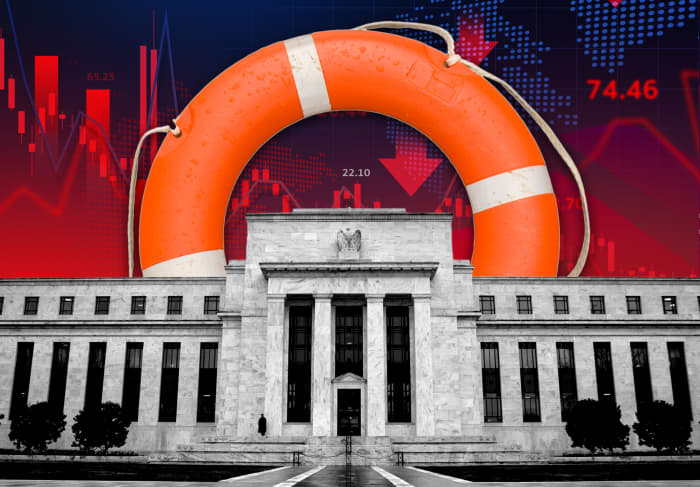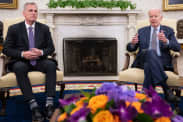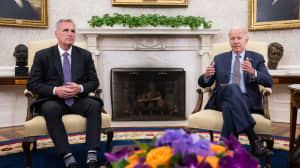If the economic storms get more difficult, traders and investors seem to think the Federal Reserve will be like a lifeguard and rescue all swimmers from the rip tides. Economists see such confidence as misplaced given the high inflation environment.
In general, investors and traders have been steadfast in their view they can count on the Fed to come running at the first hint of a downturn.
Traders in derivative markets have partly walked back rate-cut expectations, but still see the fed-funds rate — now at 5% to 5.25% — falling back to above 4.5% by year-end.
Behind this bet is the view that the central bank will pivot and lower rates at the first hint of a recession. After all, that was the Fed’s response after the last series of rate hikes in 2018- 2019.
But that’s not the playbook the Fed is following, economists say. The Fed has gone back to the lessons from the 1970s, the last time of high inflation.
The central lesson from that decade is that recessions don’t lower inflation on their own. The only way to get price pressures to cool is if the Fed is willing to keep policy tight, said Robert Brusca, chief economist at FAO Economics.
If the Fed turned around and cut rates like the market is pricing in for 2023, it would create “the worst of all possible worlds,” Brusca added.
Fed officials have been insisting they plan to keep policy “higher for longer” in this cycle.
On Monday, Richmond Fed President Tom Barkin tied the strategy of holding rates high to research from his regional bank on the lessons of the 1970s.
“The number one lesson from the seventies is don’t quit too soon, don’t back off from fighting inflation because you’re worried about what the other consequences might be,” Barkin said in a recent Bloomberg Television interview.
If the Fed doesn’t finish the job, inflation will come back higher and the Fed would have to do even more damage to bring it down, Barkin added.
The late Marvin Goodfriend, the longtime director of economic research at the Richmond Fed, criticized Fed policy in the 1970s for being “go-stop.”
The Fed would keep policy too easy and then slam on the brakes.
Under this approach, inflation drifted up in the 1970s. It took Paul Volcker to engineer a recession and hike interest rates to 20% to wring high inflation out of the system.
Bond and stock-market investors alike have convinced themselves that the Fed will cut rates quickly this year, said Ethan Harris, head of global economic research at Bank of America Securities.
“The markets want to believe that the Fed is going to come to the rescue here. It is not just the bond market, [it’s] the equity market also. They haven’t convinced themselves that the Fed is going to accept the recession,” Harris said.
That indicates Market participants don’t appreciate how different this business cycle is from recent business cycles.
“The Fed hasn’t deliberately triggered a recession since Volcker. In all recent cycles the Fed backed off as soon as there was a whiff of recession,” he said. They were able to do that because inflation was low, he added.
“You really have to go back to the 70s and 80s to understand what they’re up to. Today is a mini-version of that and recent business cycles are not very informative for what the Fed is doing,” Harris said.
The Fed’s pivot in 2019, the last business cycle, was an experiment to allow the economy to run hot. “That experiment has failed miserably,” Harris said.
Predictions of a recession have ebbed and flowed since last summer. Right now, the number of economists predicting at least two quarters of contracting gross domestic product is rising.
One market-implied gauge saw over a 90% chance of a recession in the coming months. The Fed’s staff said in March that a mild recession was their base case.
Market expectations of rate cuts did firm considerably after the collapse of Silicon Valley Bank in mid-March.
Guy LeBas, chief fixed income strategist at Janney Montgomery Scott, said he thought the market pricing was reflecting the risk of the Fed having to slash rates in a banking crisis rather than one or two cuts.
The Fed has its first cuts penciled in for sometime in 2024. Officials see three 25 basis point cuts over that year.







